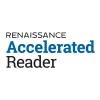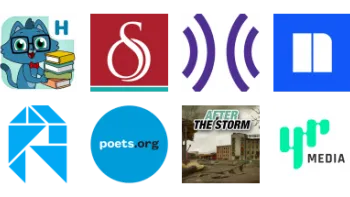Take a look inside 5 images
Accelerated Reader
Pros: Teacher tools track progress with great visuals in real time; built-in texts make for especially easy use.
Cons: Quizzes may take the joy out of independent reading, especially for struggling readers.
Bottom Line: A stellar literacy platform for assessing student reading levels and promoting further reading.
Use Accelerated Reader as your main tool for tracking your students' independent reading. Have students regularly track the books they're reading. Be sure to help your students set reasonable reading goals (like advancing their reading level or reading a certain number of books in a month) and show them how they can track their progress.
You can also use Accelerated Reader as your go-to tool for assigning nonfiction texts to your students. Require them to complete the activities and quizzes, either as graded practice or for participation credit in your class.
Accelerated Reader is a digital reading platform that helps students develop their independent reading and instructional reading skills. This product now features tools that were previously part of other tools created and acquired by developer Renaissance Learning, including AR 360, Accelerated Reader, and Subtext. Those products' features are now part of a single streamlined Accelerated Reader experience. This tool can help teachers understand their students' reading levels and recommend appropriate texts for each user's always-updating "Discovery Bookshelf." Students can browse texts and gauge their own reading progress through their dashboard. Meanwhile, teachers get detailed reports about students' progress, and they can use this data to assign different texts to their students, or to strategically target instruction or assignments in the classroom.
Accelerated Reader doesn't always include the texts themselves; instead, it's designed to be a tracking system for students' reading and a way to offer quizzes on comprehension. Students can set their own reading goals, input a fiction or nonfiction book they've just completed, and then take a built-in quiz, and their resulting score helps determine their current reading score (using Lexile measures and the developer's proprietary ATOS measurement system). Full-text versions of tons of instructional and informational texts are available, including a variety of nonfiction texts and news topics. Each of these includes instructional skills practice (like writing prompts) and a built-in quiz.
Renaissance Learning acquired Subtext and thoughtfully integrated the best features from its many products into a single, powerful literacy platform. There's an embarrassment of riches here: comprehension assessments for more than 200,000 titles and counting, a spectacular amount of data available for every student's performance, and a ton of info about how to get started with the tools and make them work in the classroom. Compared with other literacy platforms (like Lightsail or StudySync, for example), Accelerated Reader stands out for not including all of its referenced and covered texts as part of an e-reading experience. It's refreshing for a digital tool to expect many students to still be reading nondigital books. That's not to say that there isn't a good digital reading experience; that's here too, and some spectacular features are included -- many a great fit for the Common Core-aligned classroom.
The one real limitation for Accelerated Reader may be its potential to promote individual reading practice. Fluent, enthusiastic readers will be thrilled, since it's fun to take a quiz on a book you loved, especially when you know you'll ace it. Less confident readers, however, may resist the quiz requirement. If students are already reluctant to take quizzes at school, then bringing quizzes to independent reading may not always foster positive feelings of achievement or accomplishment. If students know a comprehension quiz awaits, it's possible that they might not completely buy in to the pleasure of independent reading in this scenario. Adding something more in the way of social features -- like the ability to interact with classmates via social annotation or reflection, or the ability to share recent reads -- might be helpful ways to further engage and encourage skeptical readers. Nevertheless, this is a spectacular system for determining students' reading levels and helping them grow.













